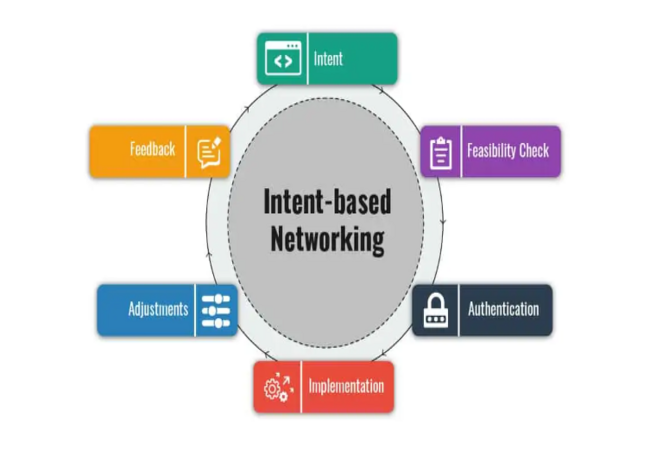Intent based networking (IBN) enables network administrators to describe business outcomes, and the software automatically interprets and translates those objectives into configuration changes. Intent based network assessment It allows for a faster fix to issues, more visibility, and better control.
Many organizations are attempting to update their networks with IBN. However, this is a large and complicated task when dealing with the many devices in a distributed infrastructure.
Verification of Network Intent
Intent based network assessment is a revolutionary new way of managing enterprise networks. It leverages AI and machine learning to automate network operations and implement; security and prioritization policies associated with various applications, users, and locations. It reduces manual tasks, such as pushing configuration changes to hundreds or thousands of devices, and eliminates human errors that can provide opportunities for attackers.
Intent-based networking uses a process known as “intent translation.” This is where the network administrator translates high-level policy intentions (e.g.; to establish a high-speed link from one location to another) into lower-level rules that the network devices can understand. This allows the network to automatically interpret and execute these policies without requiring engineers to modify each device.
Achieving these business outcomes requires the network to be flexible and responsive. With an intent-based network, IT organizations can quickly adapt to new demands – whether enhancing bandwidth to handle workloads or expanding Wi-Fi coverage for a major event. It also allows IT to free up resources for more important projects and ensures that the organization; can deliver the best possible experience to customers.
As a result, an intent-based network is constantly checking to ensure; its configurations are accurate and that it is still complying with any previously deployed policies. This self-checking can help prevent out-of-compliance incidents, enabling IT to identify issues faster to correct them.
Automated Implementation
Intent-based network technology allows administrators to translate intent commands into configuration changes and validate those changes. It eliminates the need for manual confirmation by IT professionals and increases confidence that the correct settings are in place. It also reduces the time spent performing these tasks manually and eliminates the possibility of human error in a manual process.
This automated implementation process enables the network to respond quickly to new business requirements and ensures protection. For example, suppose a company starts using video conferences in some locations; and the network needs to shift security to handle Intent based network assessment these new requirements. In that case, the system will automatically change the necessary settings; without waiting for the IT department to act on a request.
Network State Awareness
Intent-based networking is an automated management system that can translate business policies into network configuration settings. Network administrators can easily change a policy; and the tool can automatically verify that this will not cause any issues with existing infrastructure, such as access lists and firewall settings. It reduces human error and improves the network’s security posture, Intent based network assessment as administrators do not have to worry about forgetting to remove an access list or leaving something behind.
The intent-based networking tool can quickly accommodate rapidly arising business needs, such as video conferences, by shifting network resources and protecting them appropriately. This is much faster than possible with a traditional network monitoring solution; which requires the administrator to configure each new requirement or risk performance degradation manually.
This is a significant benefit of implementing “Software-First” Intent-Based Networking. As explained in my recent blog, this approach to network automation consolidates; the policy definition across all multi-domain infrastructures and enforces this policy end-to-end. It also prevents Intent based network assessment the use of ad hoc solutions that are difficult to maintain and can lead to security gaps and compliance violations.
Intent-based networking is an innovative way to rework networks and dramatically improve their security posture. Using AI and ML to automate and optimize network operations helps organizations reduce the risk of security breaches, ensure compliance with industry regulations and standardsl; and take control of their networks.
Dynamic Optimization
Intent-based networking is gaining attention in the market because it promises to reduce network configuration work. Rather than network administrators creating scripts to implement changes across the whole network using a command line interface (CLI), IBN systems interpret intent and figure out how to achieve it without manual intervention.
The system translates the original business intent into network policies; and enables automation that can take effect on individual devices based on their current condition. It continuously validates the original plan and takes corrective actions if any deviations from that intention are detected in real-time. It means the IBN-based system can self-heal the network to align with the original intent, enabling it to be treated as a service rather than a collection of individual devices.
This capability to identify and predict deviations from original intent is enabled by machine learning (ML). ML is a subset of Artificial Intelligence that allows machines to learn rather than act smart. Using ML, IBN software can determine the best way to optimize and automatically implement network security measures that align with the original business intent. In addition, it can identify and notify operators of relevant conditions, insights, and threats faster than traditional unified management approaches while filtering out irrelevant “noise” to make it easier for them to see what’s important.




